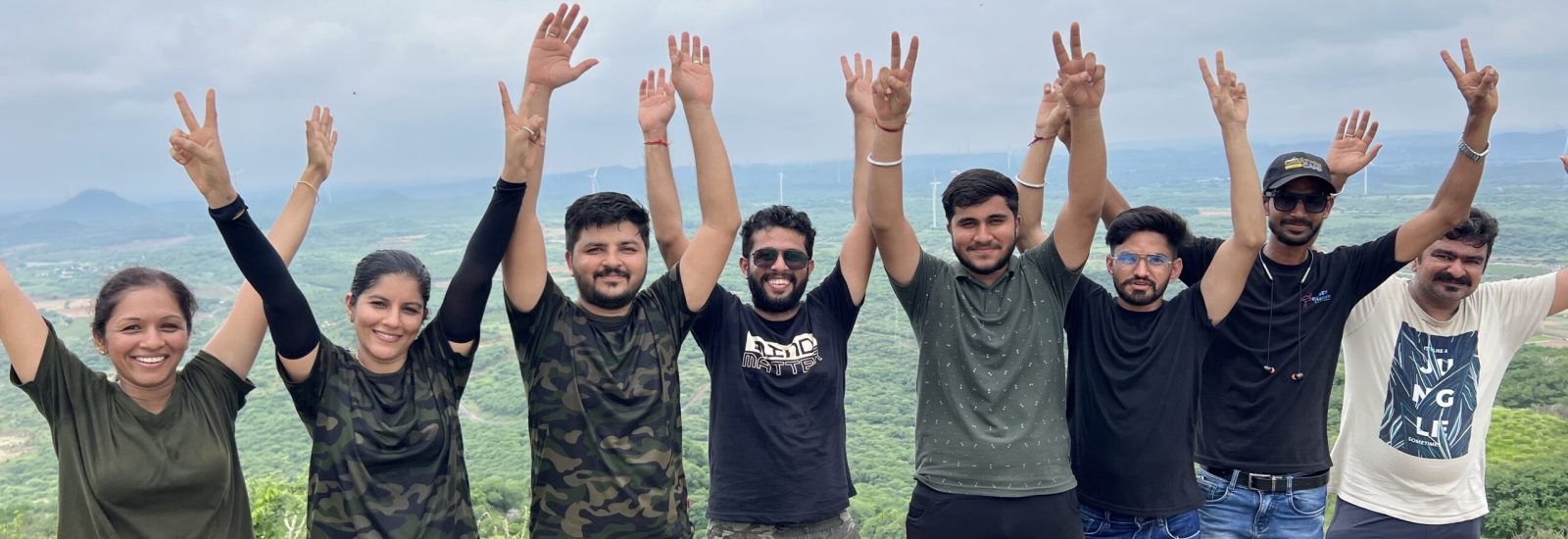
Eco-Tracking Expedition
Eco-Tracking Initiative
Introduction
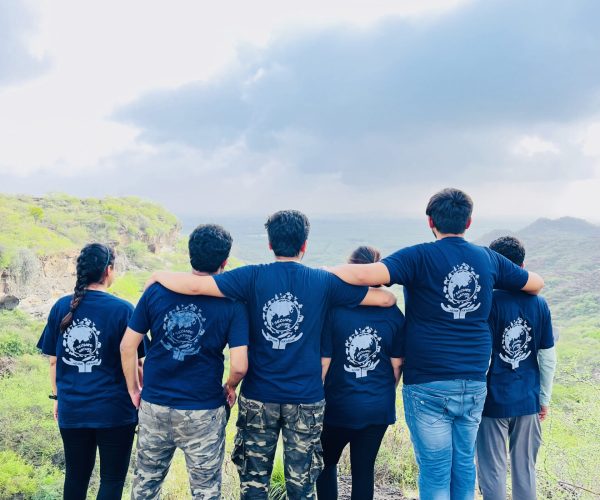
Eco-tracking is more than just a physical endeavor—it is a journey into the heart of nature, offering an opportunity to connect deeply with the environment while embracing adventure and discovery. Our recent eco-tracking expedition embodied this spirit, as we explored a range of hills, forested trails, and diverse natural habitats.
Designed to go beyond the thrill of trekking, this multi-location expedition aimed to cultivate a deeper understanding of ecosystems, wildlife, and our role in conserving the environment. Participants engaged in hands-on learning, wildlife observation, educational activities, and cleanup drives to foster eco-consciousness and environmental responsibility.
Why Eco-Tracking Was Needed – What We Observed
Nature is under increasing pressure from human activity—deforestation, littering, habitat loss, and climate change are threatening biodiversity and disrupting ecosystems. While many are aware of these issues, fewer have the opportunity to experience them firsthand.
Eco-tracking was needed as a way to bridge that gap.
By physically engaging with natural landscapes, participants could:
Observe environmental degradation like litter on trails and shrinking green patches.
Spot signs of wildlife, showing both presence and vulnerability of native species.
Experience nature’s fragility and resilience through silent walks, clean-up drives, and tracking rare animals.
Learn environmental responsibility in an immersive, impactful setting.
Trekking Locations Covered
During the expedition, we explored six unique natural locations, each offering distinct terrains and ecological experiences:
1. Dhinodhar Hill – Adventure Meets Awareness
Dhinodhar Hill, a majestic volcanic formation in the Kutch region, was the opening destination of our eco-tracking expedition. Its rugged terrain, geological layers, and commanding views offered not just physical challenge but also educational value. As one of the region’s most prominent geological landmarks, it became an ideal setting to discuss volcanic activity, rock formation, and the slow yet powerful processes that shape natural landscapes. Along the way, participants observed xerophytic plants, dryland birds such as larks and rock chats, and hardy insect life adapted to the arid climate.
To enhance engagement and learning, we organized a team-based treasure hunt integrated into the trek. Participants followed a trail of clues that prompted them to observe natural elements and answer questions related to local ecology and geology. This activity encouraged teamwork, environmental observation, and critical thinking, while making the ascent lively and purposeful. The gamified experience helped even novice trekkers feel more connected to the landscape and more aware of its natural features.
Despite its remote beauty, Dhinodhar Hill revealed signs of environmental stress, including litter along the trails and vandalized rock surfaces. This underscored the need for conservation education even in less-visited locations. After completing the treasure hunt, all teams took part in a cleanup drive, collecting plastic waste and discarded packaging. It was a meaningful end to the day—reminding participants that every small act of stewardship matters. Dhinodhar set the tone for the expedition by blending adventure with a strong message of environmental responsibility.
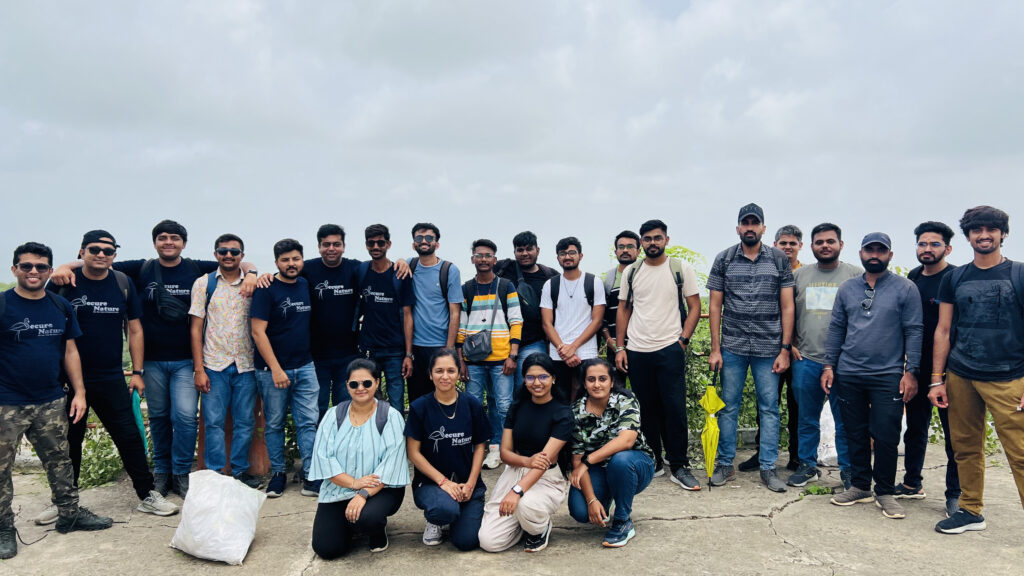
2. Tapkeshwari Hills – A Haven for Birdwatchers
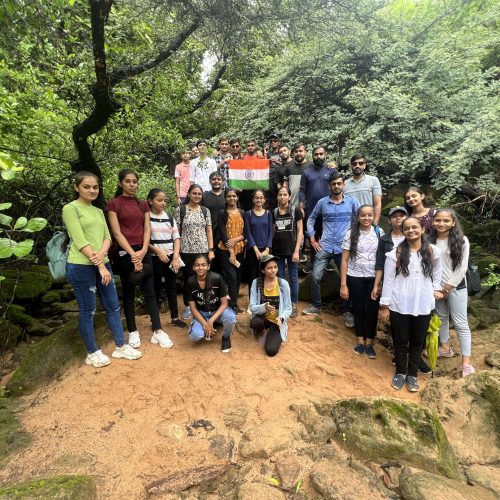
Tapkeshwari Hills is a serene and picturesque destination located near Bhuj. Known for its beautiful rock formations, native trees, and peaceful environment, this hill was perfect for a slow-paced and mindful trek. As we walked along the winding trails, the sounds of chirping birds and fluttering butterflies made the experience calm and soothing. We spent time identifying local bird species, such as bee-eaters and drongos, and observed native flora that thrives in the rocky soil.
This location gave participants a chance to connect with nature in a quiet and personal way. Many brought binoculars and sketchbooks, using the peaceful setting for birdwatching and nature journaling. Tapkeshwari Hills became a space not just for trekking, but for pausing, observing, and reflecting.
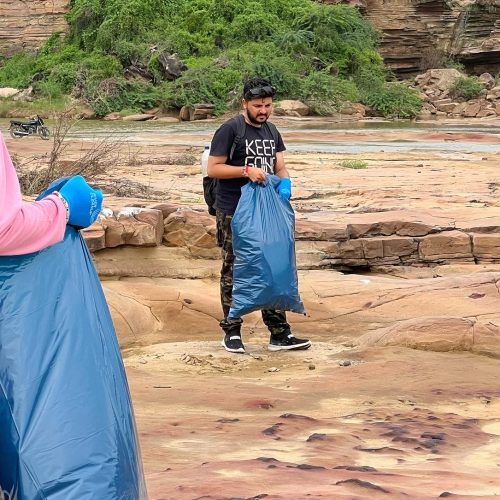
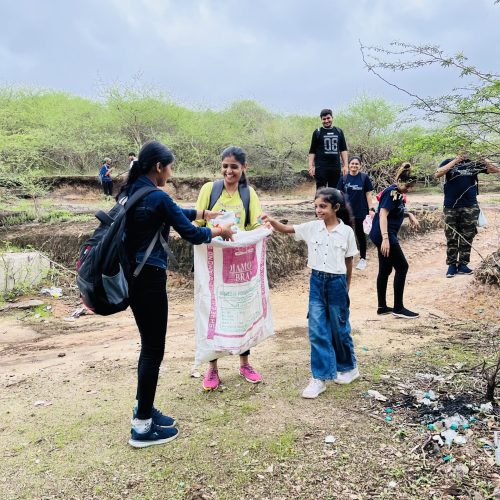
3. Katrod Hill – Views and Vantage Points
Katrod Hill offered a moderately challenging climb with rewarding panoramic views of the surrounding region. The trail included a mix of narrow paths, gentle slopes, and open ridges, making it a favorite for those who enjoy scenic hikes. As we reached higher elevations, the wind grew stronger and the landscape opened up beautifully, making it ideal for spotting birds in flight.
Participants learned to trek mindfully, focusing on their surroundings and tuning in to natural sounds and movements. It was also a great spot to discuss how altitude and terrain affect plant and bird life. Katrod Hill showed us that with each step upward, we not only gain elevation but also perspective.
4. Nanamo Hill – Nature's Quiet Corner
Nanamo Hill, a lesser-known but incredibly peaceful trekking spot, allowed us to truly slow down and connect with untouched nature. The trail was quiet and uncrowded, giving everyone space to walk silently, observe small creatures, and listen to the sounds of nature.
This trek focused on nature journaling and personal reflection. Participants documented what they saw and felt—capturing everything from insect activity to changing light through the trees. Nanamo Hill reminded us that sometimes, the most meaningful discoveries happen in silence.
5. Bhikhurushi Trek – A Biodiversity Treasure
Bhikhurushi is a trail rich in biodiversity, featuring a variety of ecosystems—from dense undergrowth to open forest ridges. This location stood out for the sheer variety of plants, insects, birds, and terrain we encountered. The trail offered moments of both quiet observation and physical effort, keeping participants fully engaged.
We spotted signs of animal movement, nests, and natural feeding zones, helping us understand how different species coexist in the same space. Bhikhurushi proved to be an incredible place for hands-on ecological learning and adventure.
6. Makda Forest – Into the Wild
Makda Forest was without doubt the highlight of the entire expedition. This dense, green forest gave us an immersive experience in a real woodland ecosystem. As we walked under thick canopies, we studied the layers of the forest, from ground-level herbs to towering trees.
The most exciting moment came when we discovered fresh leopard footprints and scat—an incredible sign of a large predator’s presence. We also saw owls, eagles, colorful butterflies, and a variety of smaller birds, all thriving in this biodiverse habitat. Makda Forest left participants with a deep sense of wonder and respect for the natural world.
Environmental Initiatives – Action on the Ground
At every location we visited—from Dhinodhar to Makda—we carried out trail cleanup drives, collecting plastic waste, wrappers, and other litter left behind by previous visitors. These activities were not just about cleaning up but about teaching the importance of the Leave No Trace principle.
Participants realized how even small actions, like picking up a wrapper or carrying reusable bottles, can help protect natural spaces. These efforts helped build a sense of responsibility and pride in being part of something bigger—taking care of our environment.
🌿 What You Can Do – Be a Part of the Change
Our eco-tracking expedition was not just about observing nature—it was about taking small steps toward protecting it. You don’t need to trek up hills or explore forests to make a difference. Here are simple actions you can take right now to support the environment and join our cause:
✅ 1. Join Our Initiative
Be part of our next eco-tracking event, clean-up drive, or awareness program. Follow us on social media or subscribe to our newsletter to stay updated.
🥤 2. Say No to Plastic
Carry a reusable steel or copper water bottle instead of buying plastic bottles on treks or daily commutes.
Avoid packaged snacks when going outdoors—bring homemade or eco-packed food.
🧹 3. Clean As You Go
Whether you’re hiking or picnicking, always collect your own trash.
Go a step further—pick up litter you find along the way.
🧠 4. Educate and Inspire Others
Share what you learn about nature, conservation, and eco-tracking with friends and family.
Post about your experiences on social media using #EcoTracking or #GreenTrails to spread awareness.
🌳 5. Respect Natural Spaces
Stick to designated trails.
Avoid loud noises, feeding animals, or disturbing habitats.
📔 6. Start Nature Journaling
Begin observing birds, insects, trees, or seasonal changes in your area. Keeping a nature journal helps build a personal connection with the environment.
Conclusion – A Journey That Changed Us
The eco-tracking expedition was more than just a series of treks—it was a journey of discovery, learning, and service. Every step on every trail brought us closer to understanding the beauty and fragility of nature. From discovering leopard tracks in Makda Forest to spotting a butterfly in Tapkeshwari Hills, every moment taught us something new.
We returned home with memories, journal entries, and a stronger commitment to environmental protection. This expedition didn’t just show us nature—it changed how we see it. Eco-tracking taught us that adventure can be meaningful and that every small step taken with care can make a lasting impact on the planet.








